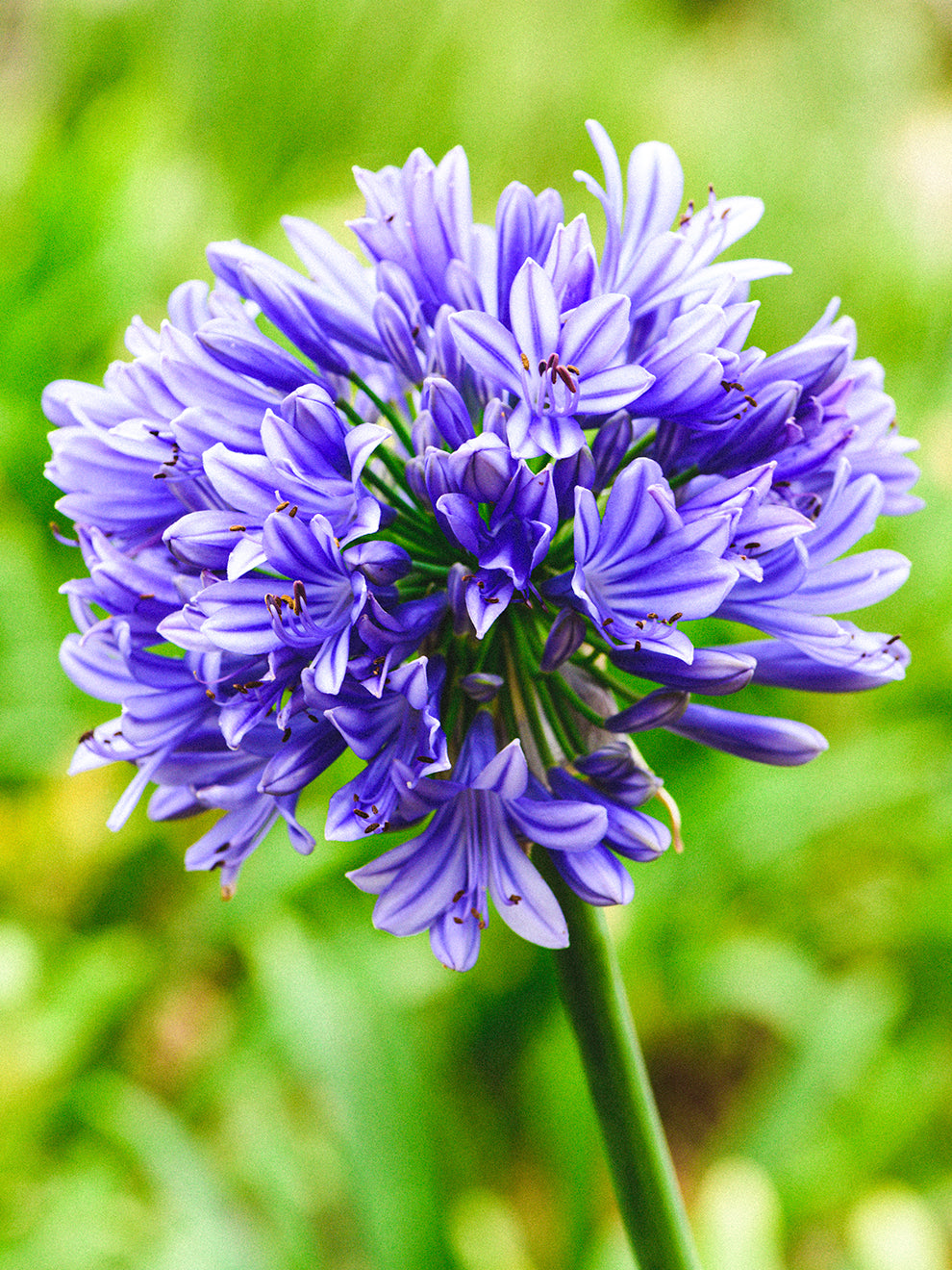Exactly how to Plant and Maintain Agapanthus in Your Garden
Mastering the Art of Agapanthus Care: Vital Steps for Healthy And Balanced Development and Vibrant Blossoms
In the realm of horticulture, the cultivation of agapanthus stands as a satisfying venture for those who seek to support these stylish flowering plants. From picking the ideal range to understanding trimming methods, the journey towards growing thriving agapanthus plants is multifaceted and holds the key to opening the complete capacity of these botanical treasures.

Selecting the Right Agapanthus Selection

When picking the appropriate Agapanthus variety for your yard, take into consideration factors such as environment viability, flower color, and development routine. Agapanthus, generally known as Lily of the Nile or African lily, can be found in a range of shades varying from tones of purple and blue to white. Pick a blossom color that matches your existing garden scheme to develop a harmonious landscape. Additionally, take into consideration the climate in your area to ensure the Agapanthus range you pick can grow in your certain problems. Some ranges are extra forgiving of chilly temperatures, while others favor warmer climates. Recognizing the growth habit of different Agapanthus varieties is crucial for proper placement within your yard. Some ranges have a clumping growth habit, perfect for containers or borders, while others have an even more dispersing nature, appropriate for ground cover or mass growings. By thoroughly assessing these factors, you can pick the excellent Agapanthus range to enhance the appeal of your yard.
Ideal Planting Conditions
Thinking about the optimum ecological requirements is vital for successful Agapanthus growing. Agapanthus plants are delicate to chilly temperatures and need to be protected from frost during winter season months.
To guarantee healthy growth and vibrant blossoms, plant Agapanthus light bulbs at a deepness of regarding 2-4 inches and room them 8-12 inches apart. Adding organic matter, such as compost, to the dirt can boost drainage and fertility, advertising durable root development. Mulching around the base of the plants helps retain wetness and subdues weed development. Regular watering is vital, particularly throughout the expanding period, to keep the dirt continually wet but not waterlogged.
Watering and Feeding Tips
Preserving correct wetness degrees and offering essential nutrients are crucial aspects in the care program for Agapanthus plants. When it pertains to watering Agapanthus, it is essential to strike an equilibrium. These plants like consistently damp dirt however are prone to root rot if overwatered. During the growing period, water deeply when a week, making sure the soil is well-draining to stop waterlogging. In hotter environments or during visit the site periods of dry spell, even more regular watering may be needed to maintain the dirt evenly wet. Nonetheless, decrease watering in the winter months to avoid water logged problems.
Fertilizing Agapanthus is necessary for promoting healthy and balanced development and prolific blossoms. Use a well balanced plant food, such as a 10-10-10 formula, in the very early springtime as brand-new growth arises. By complying with these watering and fertilizing ideas, you can ensure your Agapanthus plants thrive and create lively, lasting flowers.
Trimming Strategies for Agapanthus
Trimming Agapanthus plants at the ideal times and with appropriate methods is crucial for preserving their health and advertising ideal development and flowering. The suitable time to trim Agapanthus is in late wintertime or early spring prior to brand-new growth emerges.
Deadheading invested flowers can additionally redirect the plant's energy into producing even more flowers rather than establishing seeds. If you want to gather seeds for proliferation, leave some flowers to fully grown and dry on the plant.
Remember to make use of clean, sharp tools to make accurate cuts and reduce the risk of introducing conditions. Agapanthus. Routine trimming will certainly help maintain your Agapanthus looking cool and healthy and balanced while ensuring a plentiful display screen of stunning blooms
Dealing With Usual Bugs and Diseases
After guaranteeing correct pruning strategies for Agapanthus, it is crucial to attend to typical insects and illness that can influence the wellness and vigor of these plants. One usual bug that affects Agapanthus is the Agapanthus gall midge.
In addition, Agapanthus plants can experience from origin rot if they are planted in poorly draining dirt. By being attentive and taking punctual activity against conditions and bugs, you can assist your Agapanthus plants thrive and produce lively blossoms. Agapanthus.

Final Thought
Finally, mastering the art of agapanthus treatment entails picking the ideal selection, providing optimal planting conditions, proper watering and feeding, proper trimming techniques, and addressing common parasites and conditions. By adhering look at these guys to these essential steps, you can make sure healthy growth and vibrant blossoms for your agapanthus plants. Bear in mind to routinely keep an eye on and keep your plants to promote their total well-being and long life.
To make certain healthy and balanced development and vibrant flowers, plant Agapanthus bulbs at a depth of about 2-4 inches and area them 8-12 inches apart. By complying with these watering and feeding tips, you can guarantee your Agapanthus Discover More plants prosper and produce vibrant, long-lasting blossoms.
One common bug that influences Agapanthus is the Agapanthus gall midge. Furthermore, Agapanthus plants can suffer from origin rot if they are planted in poorly draining dirt. By complying with these important actions, you can ensure healthy development and vivid flowers for your agapanthus plants.